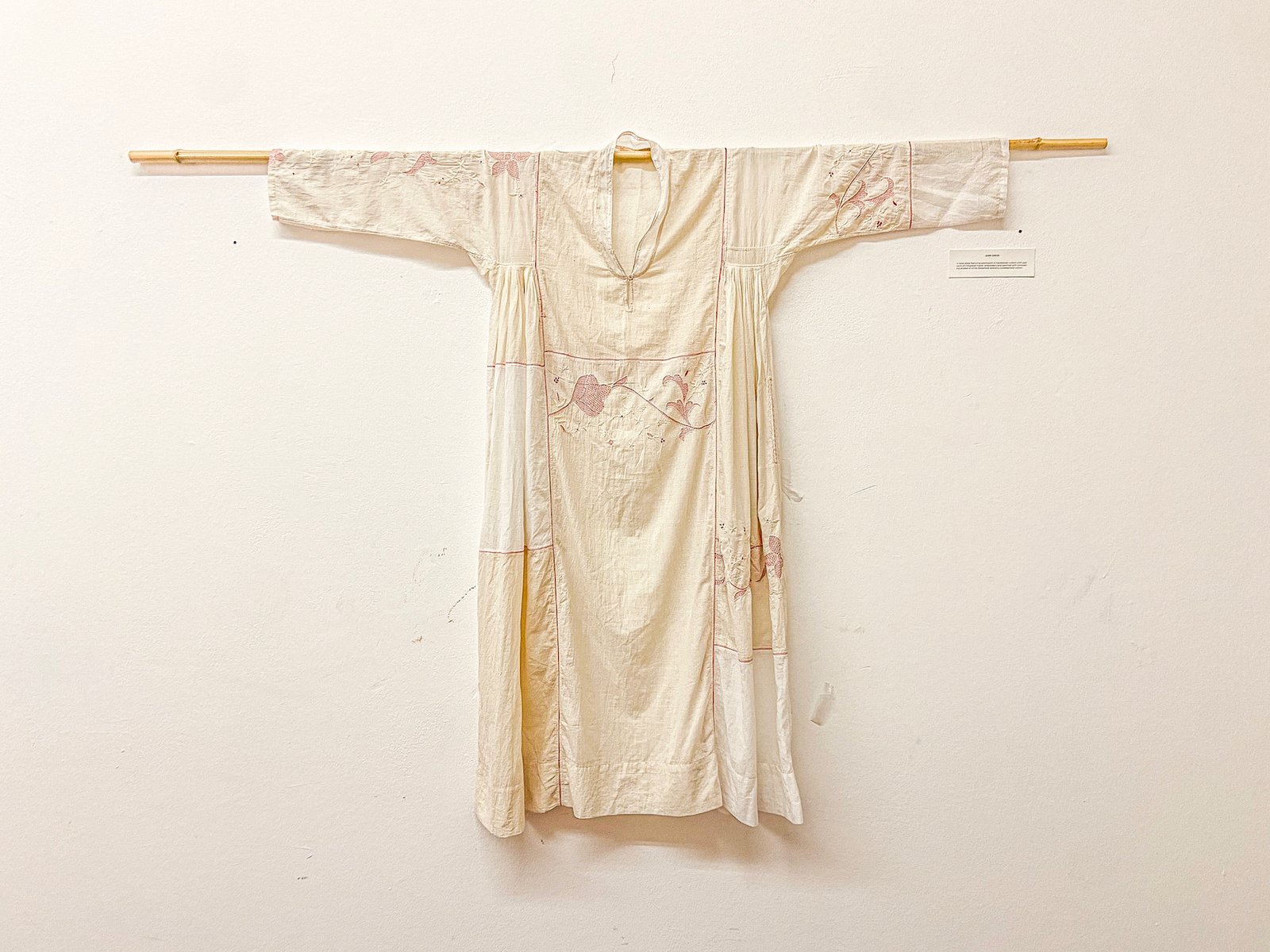At Xtant’s textile event ‘TRAMA 2022’ in Spain, Chinar Farooqui, our founder presented Music of Muslin, a multi-sensory exhibition devoted to the concepts of white-on-white and Kora (greige) aesthetic of Jamdani and Chikankari.
Trama, which means weft in Spanish, was the name of this year’s XTANT textile festival, which was held in La Caixa, Mallorca which took place from 7-21 June 2022. The curriculum consisted of a ten-day master class that included workshops, seminars, and debates with guest speakers. Cultural appropriation, transparency, radical trust, community building, intergenerational thinking, new narratives, renewable resources, closed-loop systems, natural dyes, and metaverse versus mesaverse were all covered in presentations, conversations, and workshops.
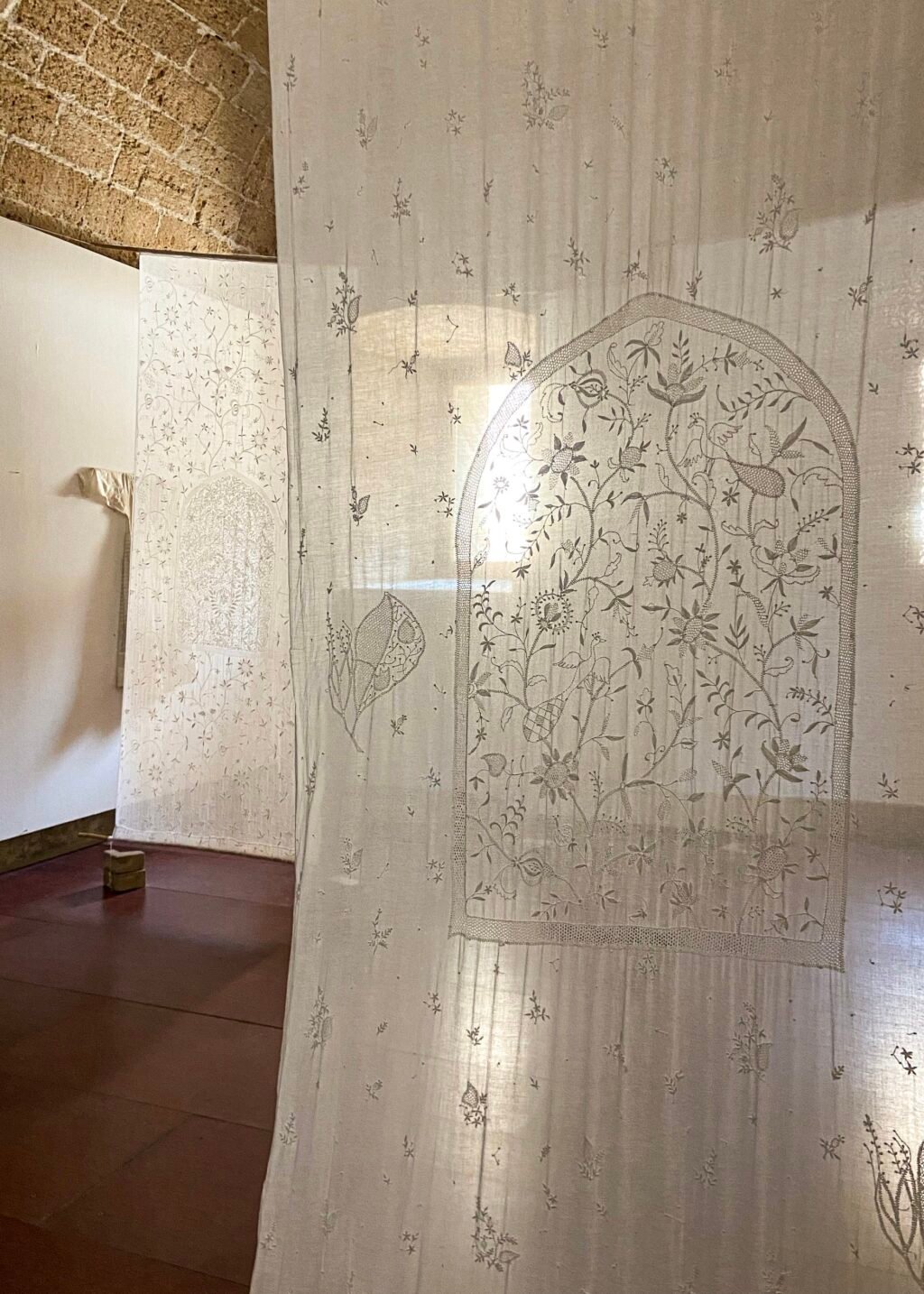

Muslin whether it is woven, embroidered or just a plain piece of fabric has always enticed everyone who is interested in the handmade, artisanal excellence and its history. The set of scrolls in the exhibition reflected the living craft traditions of weavers and embroidered in India today. Also important is the idea of beauty explored through a monochromatic aesthetics that resonates with people all over the world. It was an attempt to examine the higher realm of artistry that these craft clusters hold, which is not possible to explore in a commercial context.
On Muslin, Jamdani was traditionally woven white on white, appearing almost like a shadow. The motifs are inlaid into the fabric by
adding a denser thread to fine warp threads by hand. Chikankari, probably originated in Calcutta and Dacca among Bengali embroiders, perhaps as an alternative to Jamdani; in fact, sometimes the designs are almost indistinguishable. Both Chikankari and Jamdani were shadow work done white on white. Later on, this art form had great patronage from Mughals under whom Muslin, Jamdani, and Chikankari reached unprecedented standards of excellence.
The rectilinear elegance of mended age-old techniques of white-on-white weaving of Jamdani weave and Chikankari embroidery restored and sustained textiles, and outfits that reveal evidence of Indian origin were highlighted in The Music of Muslin. It unveils a collection of garments inspired by ancient Mughal times, such as Jama, Angrakha, and Chogha, as well as serene Muslin textiles, such as Jamdani and Chikankari, combined with Mehrab motifs from the Mughal period, that were not only visually appealing but also told fascinating stories about their makers and/or wearers, through this exhibition.
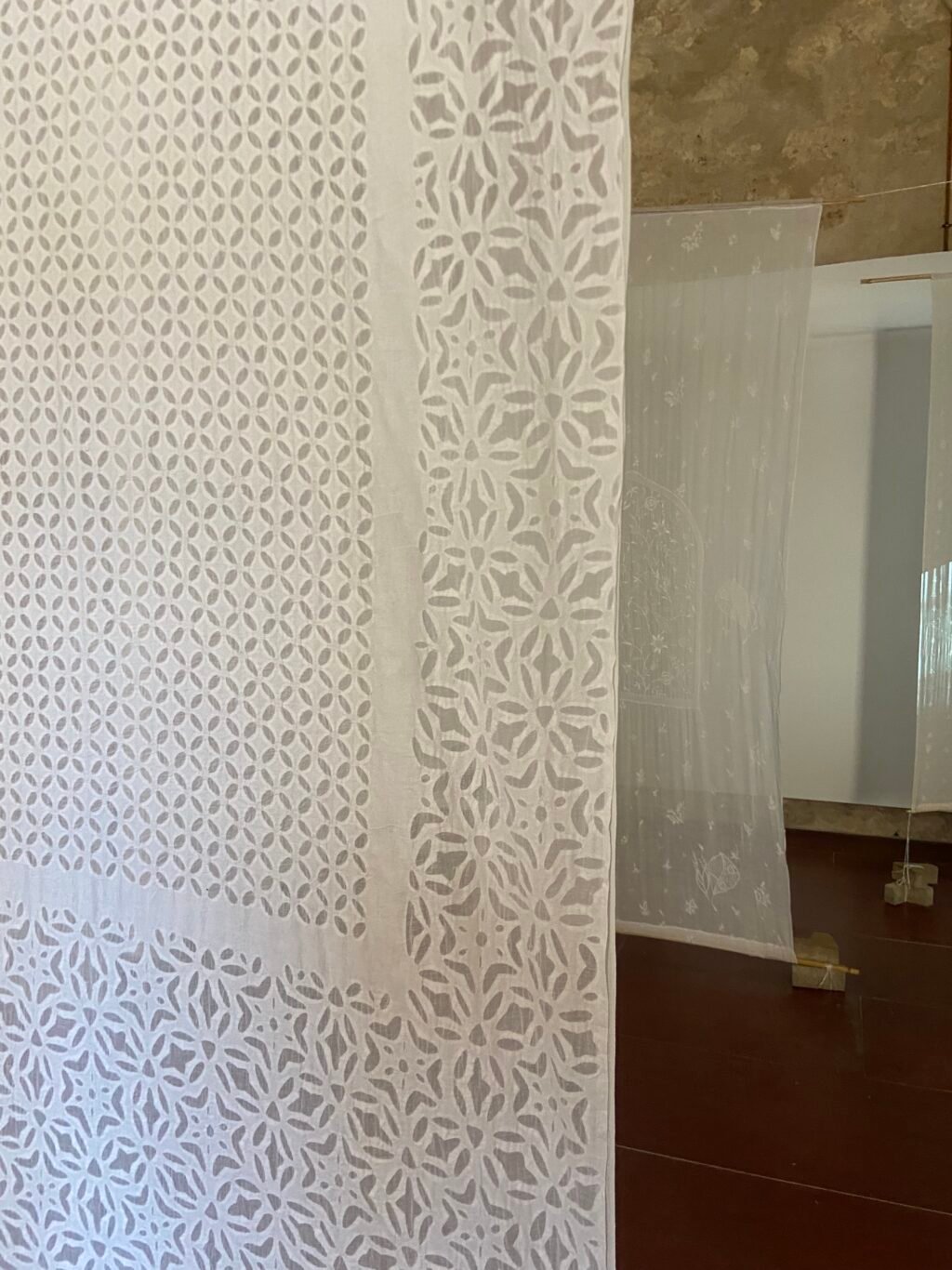
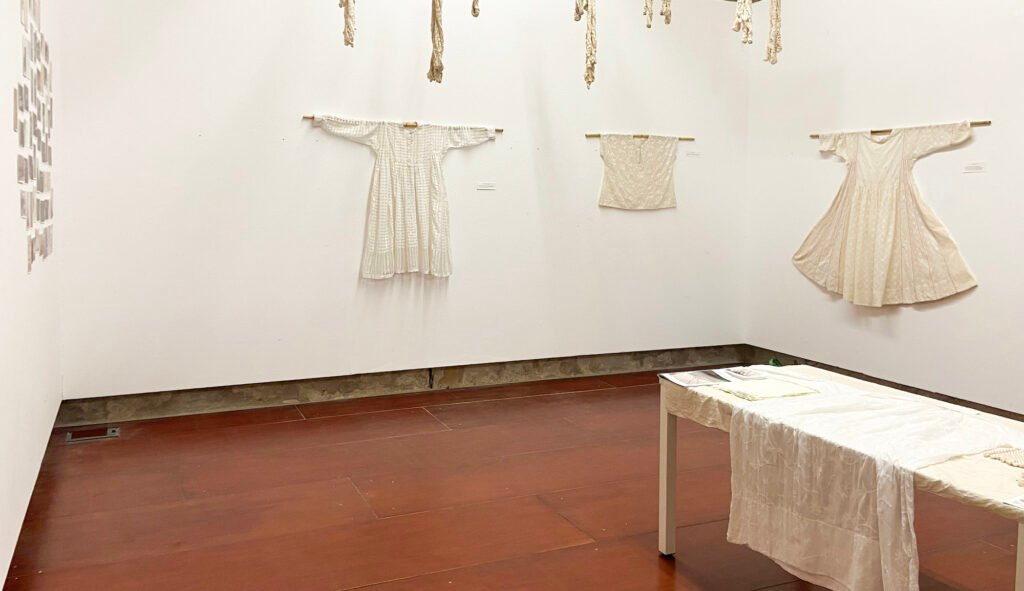
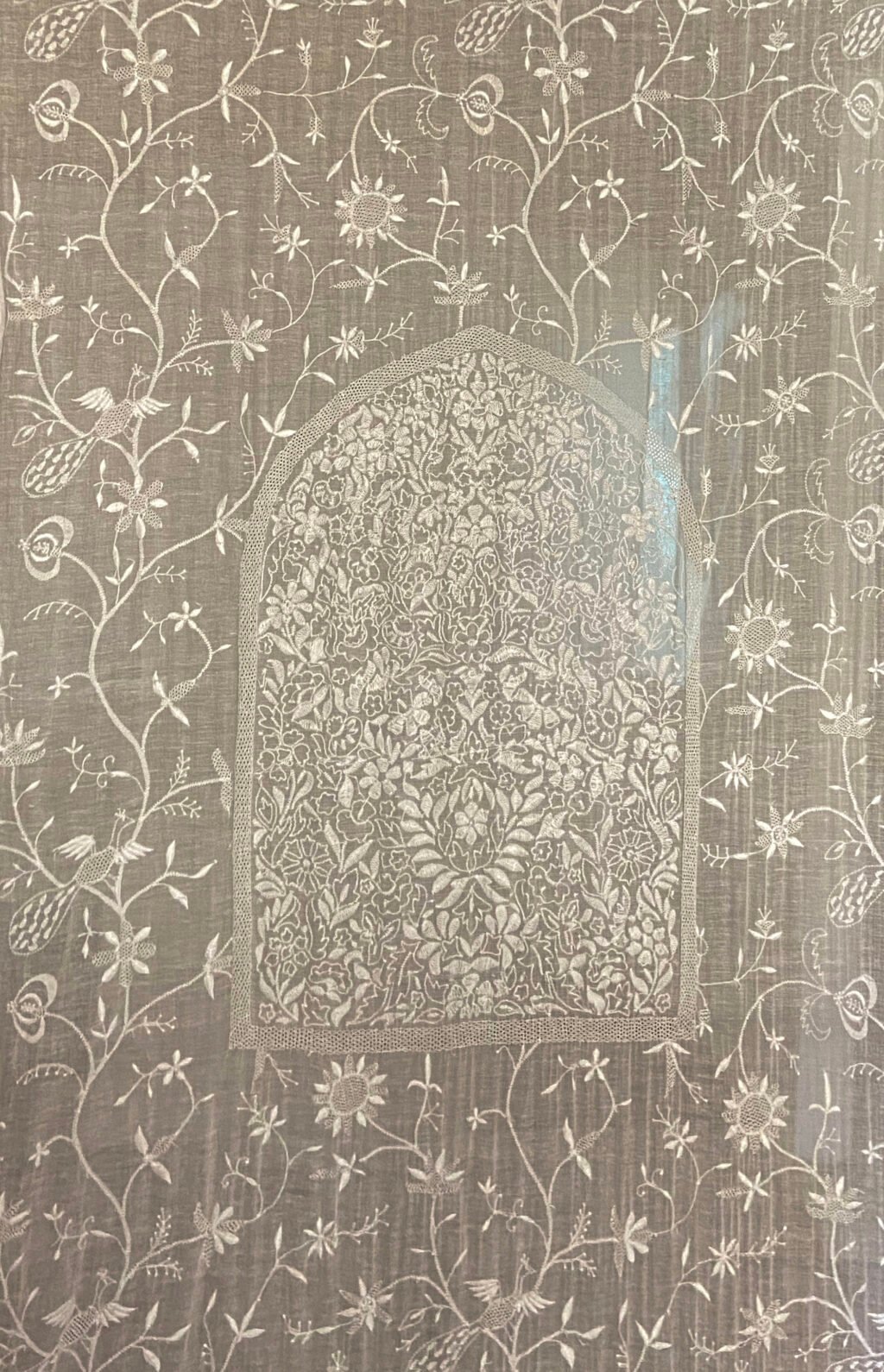

Jamdani is an extra weft technique traditionally weaved on white-on-white, appearing almost like a shadow. Chikankari probably originated in Calcutta and Dacca among Bengali embroiderers, perhaps as an alternative to Jamdani; sometimes, the designs are almost indistinguishable. This art form had great patronage from Mughals under whom Muslin, Jamdani, and Chikankari reached unprecedented standards of excellence.


Injiri has been working on Muslin textiles for the past five years and planned to show them in an audiovisual exhibition. The present process, history, and background were all seen and interacted with by the spectator. Through this presentation, culture and heritage were seen as a complicated system that includes values, beliefs, traditions, and other behaviors learned and passed down from generation to generation. Due to skill exchanges, weaving skills and traditions have been perpetuated in the context of weavers’ cultures. In the current weaving cultural milieu, traditional handwoven textiles are symbolically expressed, thus the material and fabric have a lot to say about how they’re made.
It was a small step to contribute toward the revival of long-lost fabric and its human heritage. It was not only about bringing back the ages of legacy, skill, and fineness of the muslin; perhaps it is also about bringing stories back to life.

